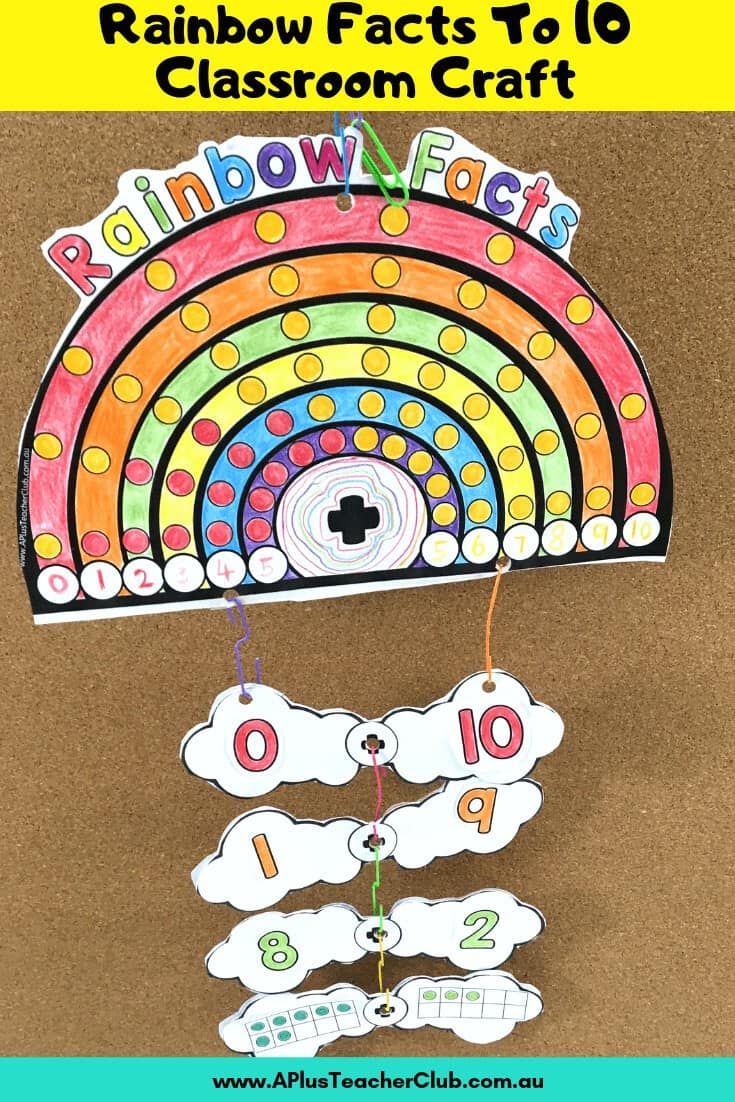Rainbow Facts To 10
Rainbow facts to 10 is an important math concept that young learners need to master. It is easier said than done, but with the right tools and strategies, this goal is achievable. In this blog post, we will delve into the world of rainbow facts to 10, including why it's essential, how you can teach it, and tips for mastering this concept. By the end of this post, you'll have a better understanding of what rainbow facts to 10 is all about and how you can help your students succeed.
Pain Points of Rainbow Facts to 10
Understanding math can be challenging for many young learners, especially when it comes to concepts like rainbow facts to 10. Some students may struggle with memorization, while others may have difficulty with visualizing the different ways to make 10 using two or more numbers. These hurdles can lead to frustration and a lack of confidence in their math abilities, which can ultimately hinder their progress in the subject.
Understanding the Target of Rainbow Facts to 10
The goal of rainbow facts to 10 is for students to understand the different combinations of numbers that can be added together to make 10. For example, 6+4=10, 7+3=10, and so on. This concept is essential for building a strong foundation in math and preparing students for more complex math problems in the future. By learning rainbow facts to 10, students can develop problem-solving skills and gain a better understanding of number relationships.
Summary of the Main Points of Rainbow Facts to 10
In this post, we'll cover everything you need to know about rainbow facts to 10, from the pain points that students may experience to the target of the concept. We'll also share some personal experiences and tips for teaching and mastering this math concept, as well as answering common questions that you may have. By the end of the post, you'll have a better understanding of rainbow facts to 10 and how to help your students succeed.
Why Rainbow Facts to 10 is Important
Rainbow facts to 10 is important because it sets the foundation for understanding addition and subtraction. When students learn the different combinations of numbers that add up to 10, they begin to see number patterns and relationships, which are crucial for more complex math problems. Additionally, understanding rainbow facts to 10 can help students with mental math, as they can quickly recognize and solve problems by using these known combinations.

How I Teach Rainbow Facts to 10
As a teacher, I like to incorporate hands-on activities and games to teach rainbow facts to 10. One game that my students love is "Rainbow Fact Bingo," where each bingo square has a different combination of numbers that add up to 10. This game is not only fun, but it also reinforces the different combinations and helps students see the patterns of rainbow facts.

Tips for Mastering Rainbow Facts to 10
One tip I have for mastering rainbow facts to 10 is to use visuals, such as number bonds, ten frames, and rainbow fact charts. These tools can help students visualize the different combinations and make connections between numbers. Another tip is to practice, practice, practice! The more students practice these different combinations, the more comfortable they will become with them.

Questions and Answers
Q: How can I make learning rainbow facts to 10 fun for my students?
A: Incorporate hands-on activities, games, and visual aids into your lessons. These can help make learning more engaging and interactive for students.
Q: What are some common mistakes students make when learning rainbow facts to 10?
A: Memorizing the combinations instead of understanding the concept, and struggling to see the different combinations can be challenging for some learners.
Q: How can I help struggling students with rainbow facts to 10?
A: Provide extra support, such as one-on-one instruction or additional practice worksheets. You can also try using manipulatives, like counters or blocks, to help students visualize the different combinations.
Q: How can I incorporate rainbow facts to 10 into everyday life outside of the classroom?
A: Point out different combinations of numbers that add up to 10 in everyday situations, such as splitting a pizza into different slices or counting change.
Conclusion of Rainbow Facts to 10
Rainbow facts to 10 is a crucial concept that young learners need to master for future success in math. By using hands-on activities, games, and visual aids, teachers can make learning more engaging and interactive for students. Additionally, practicing and reinforcing the different combinations can help students become more comfortable with the concept and ultimately succeed in math. With these tips and strategies, both teachers and students can conquer rainbow facts to 10 and build a strong foundation for future math success.
Gallery
Early Years Fun: A Rainbow Facts Card Game

Photo Credit by: bing.com / rainbow facts number poster bonds ten sheet game card templates subtraction freebies copy early years task mini five frame
Rainbow Facts? - Your Child's Education - Year One And Beyond

Photo Credit by: bing.com / rainbow friends facts math ways numbers ten worksheet make grade anchor add number chart printable addition combinations kids different worksheets
Rainbow Facts Printables FREE Poster – A Plus Teaching Resources

Photo Credit by: bing.com / rainbow facts craft printables teaching subtraction addition activity pages
Rainbow Facts To 10 Poster By Little Miss Cupcake | TpT

Photo Credit by: bing.com / rainbow facts poster math grade numbers kindergarten
Rainbow Facts | Teaching Tools | Rainbow Facts, Classroom Games

Photo Credit by: bing.com /